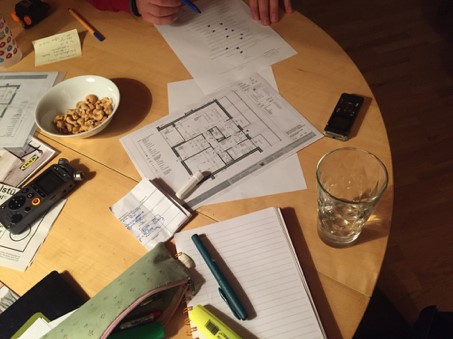Ute Groba The Presence of Timber as a Construction and Surface Material in Low-rise High-density Housing Projects
In the light of global environmental concerns, this thesis seeks to investigate the role timber as a construction and surface material can play for qualitative aspects of sustainability.
Timber as a construction material has many advantages from a sustainability point of view. This is mainly argued for with empirical aspects, such as CO2 savings or practical issues related to prefabrication. These arguments are based on aspects one can count or measure. Semantic arguments, e.g. social and cultural qualities, are more difficult to articulate and to communicate. However, a complete set of values is important to extend a building’s “loveability” (as phrased by D. Eberle, architect) and thereby its life span.
The thesis seeks to explore the role that timber as a construction and surface material can play for architectural quality and for sustainability. For a case study, low-rise high-density housing in a Scandinavian and Central European context is chosen. The qualitative research draws on four sources of information: In addition to [1] theory, [2] architects and [3] buildings, it takes [4] the inhabitants’ view into consideration. Data sources are accessed by a literature review, building analysis and interviews. The results make aspects of timber architecture explicit that relate to sustainability and to architectural quality - as addressed in theory, as conceptualized by architects, as manifested in their buildings, and as perceived by inhabitants. It discusses differences between the weighting of those aspects in each group, about the communication of the aspects, and how they might become part of design strategies.
The findings of the thesis are relevant for other timber building typologies than low-rise high-density housing as well. Importantly, the research fills a gap between theory, contemporary conception, manifestation and perception of architectural design by including the user view, which is underrepresented in research and in architectural practice. It suggests communication of architectural qualities not only to paying clients as a sales argument (to better communicate the value of architectural work to paying clients, users, contractors, authorities etc.), but also to inhabitants. This might help to improve the experience and appreciation of and the demand for timber architecture.
Results might support better-informed design decisions in early project phases, when the architect’s influence is at its peak. Making these insights (oftentimes tacit knowledge) explicit in architectural education as well will raise future architects’ awareness for the importance of addressing them in their designs and of communicating them to (paying) clients and users (inhabitants). Although being of interest for other stakeholders, too, this research is mainly directed towards practicing and teaching architects.
Institute of Architecture / Marius Nygaard (Supervisor)
PhD started in 2015

